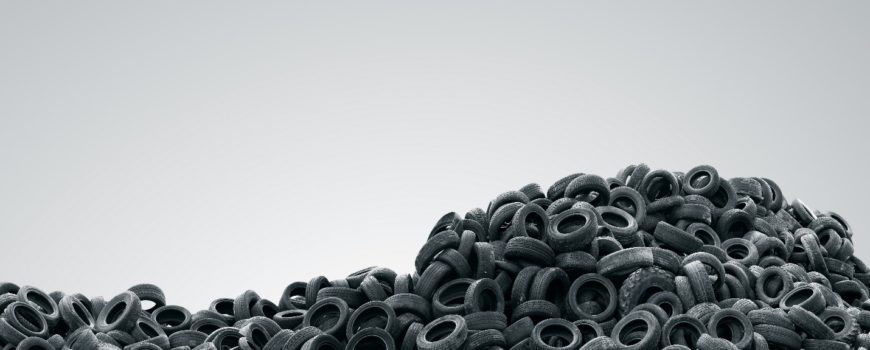We’ve all been there.
It’s the worst possible timing and you have already budgeted for other things. But your tires have given out. That means it’s time for another trip to the auto shop, or at the very least, another expense. Car repairs can get costly in a variety of ways, and most of them come for parts about which we have little understanding or knowledge. But tires?
Many consumers view tires differently than the intricate mechanical parts in and around the vehicle. They’re easily visible, so we often feel plenty knowledgeable to make buying decisions. Surely, this is an area where we can save money, right? All we need is to buy a set of used tires!
Maybe, but it’s not that simple.
Let’s take a look at the pros and cons of used tires. What should everyday consumers keep in mind when deciding between used tires and new? And is it truly a cheaper option in the long run?
Pros: Cheap and Environmentally Friendly
Clearly, the most common reason consumers consider buying used tires is the cost. It is true that with about 38 million used tires available nationally each year, sellers can offer large discounts for older tires, often half the price or less than for new tires.
There also happens to be an environmental benefit to re-selling tires. Discarding millions of tires each year contributes a large amount of pollution, and like any industry, there are positives to recycling these materials and reducing waste.
However, there are other uses for used tires when they do fall out of circulation. There is a growing market for recycled rubber. These materials have been reused for a range of projects, from improving asphalt to make roads quieter and smoother to making running tracks or field turf.
While those are the two largest benefits of buying used tires, do they outweigh the risks?
Let’s take a look at the other side.
Cons: Risk, Risk, Risk
There are several factors to consider before buying tires of any kind — and especially when looking at used tires. The first, as always, is safety.
In addition to the reduced performance of older, worn tires, it comes as no surprise that these are far less safe than new tires. A study from the National Highway Traffic Safety Administration (NHTSA) found that tires with a tread depth of 4/32″ or less were significantly more likely to play a contributing factor in crashes.
There are, of course, ways to determine the tread on your tires. The most common is the penny test: placing a penny into the groove of the tread rows with Abraham Lincoln’s head facing down. If you can see Lincoln’s head fully, the tires are too worn. Simple enough, right?
However, the penny only has 2/32″ of space between the top and Lincoln’s head. Since we know 4/32″ seems to be the necessary threshold for safe tread, many sources now suggest doing the same test, but with a quarter! There is 4/32″ of space between the top of a quarter and George Washington’s head, making it a better at-home measurement.
But what if the tread on the used tires you’re considering is fine?
Cons: The Unknown
Well, there are still numerous other factors to be cautious about. And many of them may not be readily visible to the everyday customer.
A few issues that are tougher to find can range from the age of the tire (experts caution against buying tires more than six years old), any liner or bead damage, or repairs of punctures on the inside of the tire. If buying used tires, be sure to check for any of these problems.
However, the biggest risk of all is the unknown.
When you buy new tires, sellers have to adhere to strict federal standards. But when it comes to used tires, that is not the case at all. There are no set guidelines and very few restrictions on selling used tires around the country.
That means that not only is it difficult to find some of those issues we listed above, but it’s nearly impossible to know the history of the used tires you’re considering.
How were they driven in the past? Did the previous owner drive them when under- or over-inflated? Were they used at excessive speeds? Were they properly maintained or ever repaired at a certain point?
These are all questions you would want to ask before buying used tires, but unfortunately, it could be hard to find the answers.
New Regulations for Used Tires
The lax standards for selling used tires has prompted some new legislation in certain parts of the country. For example, California passed a law in 2019 prohibiting the installation of unsafe used tires.
That law cites an NHTSA study that found worn-out tires to be three times more likely to be involved in a crash than tires with sufficient tread. The bill targets specific characteristics that would make a set of used tires unsafe. While not banning used tires altogether, it ensures that auto dealers must inspect used tires before installing them on a vehicle for highway use.
As automotive safety and manufacturing groups continue to push for newer, stricter regulations, it may become a safer prospect to purchase used tires. However, there are still many areas in the country that are operating with no such guidance.
Is It Truly Cheaper to Buy Used Tires?
The final consideration leads us back to the beginning — how much money can I save on tires? In the short term, it is no secret that used tires would initially be an easier cost to manage. But extending your view to the long term may paint a different picture.
Considering the risks in driving with reduced tread depth, you will likely need a replacement each time the tires reach that 4/32″ threshold for safety. So, it’s necessary to consider how often you’ll be replacing tires if you consistently commit to buying used tire after used tire.
Let’s simplify the math: if you buy a used tire for $50 instead of a new tire for $100, you would have to expect to get at least half of the use to get value at that cost.
However, most new tires are expected to last at least three to four years. So, if the worn-down tread on a used tire forces you to replace them each year, you would not only be shopping more often but spending more money. You’d spend $150–200 over those three or four years. Compare that to spending around $100 for a new tire that likely would have lasted even longer.
Maybe you can find a used tire that will last long enough for value, but as we’ve mentioned, there are many factors beyond tread that can cause worry for drivers using used tires, and many of them are unknowns.
Are the short-term savings worth the price you pay in peace of mind? Or worth the price, period?
No, probably not.
Make Tire Shopping Easier With Tread Connection
Once you’ve made your decision on the value of buying new compared to used, let Tread Connection simplify the process for you to buy tires. Have a professional meet you at home or at your office to get you driving with confidence without the headaches of visiting a dealership or auto shop!
BUY TIRES

